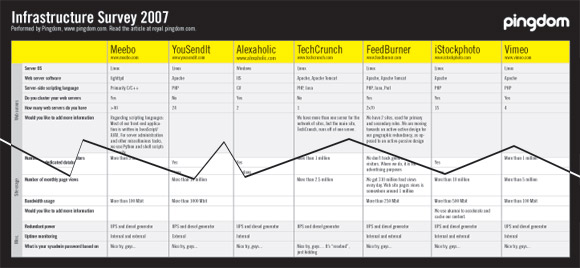Don Dodge, Director of Business Development for Microsoft’s Emerging Business Team, wrote a post claiming that what he calls “the Open Source identity crisis” – i.e. what constitutes an Open Source company – is quite pointless in his opinion.
 Diagram by Chao-Kuei, excerpt from FSF we site
Diagram by Chao-Kuei, excerpt from FSF we site
On the contrary I believe that is important to agree on what is an open source firm, “false positive” like Enterprise DB cause uncertainty, which never helps the market.
Is this a distinction without a difference? Do customers really care about the details of all these licenses? It should be noted that Microsoft, Oracle, IBM, HP, and every other software company have unique licenses as well. In my experience, customers care about a reliable solution to their problem, that works well with what they already have, with professional technical support, at a reasonable price.
Customers do care about licenses when it comes to open sources. Ask lawyers advising companies on complex merger and acquisition. Answering questions raised up by SMEs to the OpenOffice.org voluntary support for four years now, I know that licenses issues are the most frequently asked ones.
Customers demand solutions, that’s why Open Source firms able to listen to users, sharing roadmap decisions and cooperate with the community do go beyond marketing. The Open Source choice might be really effective to answer customers’ needs, though it might be not so easy.
Is it all about the source code? To me anyway, Open Source means you get access to the source code. The particular license determines what rights you have to the source code and what you can do with it. For most customers any of the licenses will allow them to do whatever they need to do for internal use. The reality is that only a tiny percentage, 8% or so, actually touch the source code, and still fewer contribute any changes back to the “community”.
I totally agree here, customers don’t like Open Source because they can change it. Availability of source code is required only if it might enable competitive advantages over competitors or, on another line of thought, if it can make a technological club happens. By the way I would really be interested in knowing more about studies reporting the 8% result.
Is it all about the community? The GPL demands that any enhancements or changes to the source code be offered back, free of charge or encumbrance, to the community. The myth is that Open Source code is developed by thousands of members of “the community”. The reality is that in most cases probably 50% of the code is developed by not more than 20 people.
Thinking in general the community is an exaggerated myth, but some projects are community intensive and among them the Linux kernel is an exception that it’s worth to mention: the stream of patches that changed the 2.6.19 kernel into the 2.6.20 were contributed by 741 different developers.
Customers don’t care if the software was developed by one individual, a community, open sourced, out-sourced, or any other way. Customers care about solving a problem, having the software work well with what they already have, and having access to good support and documentation, all at a reasonable price.
Customers do care indeed: a project backed up by multiple vendors is a better bet in the long run, while a project owned by a single company, either proprietary or open source oriented, it’s a risky bet (see The manufacturing delusion, “The Magic Cauldron” – Eric Raymond).
What if my idea of Open Source Franchising might eventually turn in a good business, Don?
Technorati Tags: commercial open source, franchising
 An application fo free by malthe
An application fo free by malthe







Reply